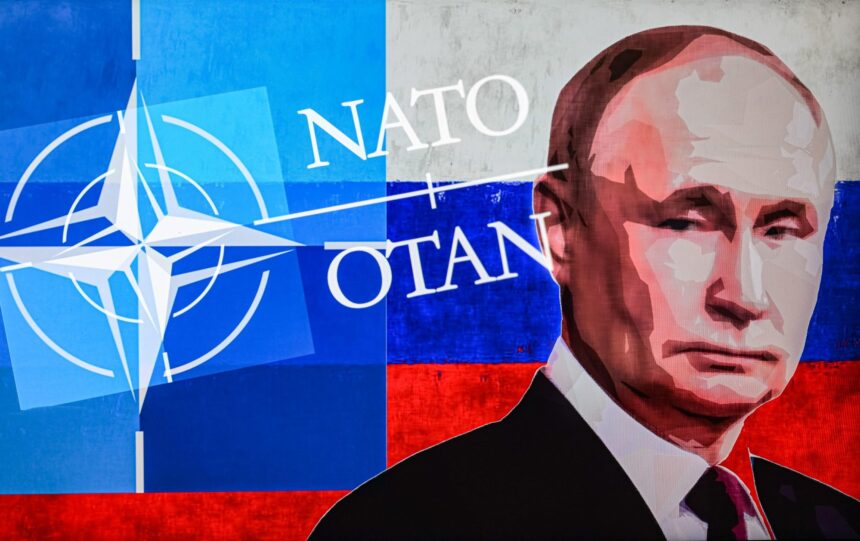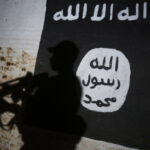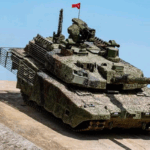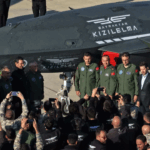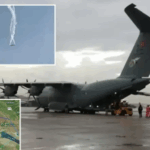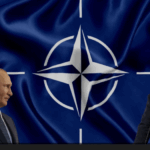The commentary titled “NATO Bolsters Its Eastern Flank” discusses recent strategic moves by NATO to strengthen its presence and capabilities in Eastern Europe. Here’s a detailed summary:
Background
NATO has been increasingly focused on enhancing its defensive posture in Eastern Europe due to growing security concerns from Russia’s actions in the region. This shift comes in response to Russia’s aggressive maneuvers and increasing military capabilities that pose potential threats to NATO member countries in Eastern Europe.
Key Points of NATO’s Strategy
- Increased Military Presence: NATO has significantly boosted its military presence in Eastern Europe. This includes deploying additional troops, improving infrastructure, and conducting joint exercises with member countries in the region. The aim is to ensure rapid reinforcement capabilities and demonstrate a credible deterrent against potential aggression.
- Enhanced Defense Capabilities: NATO is investing in advanced defense systems and capabilities tailored to counter modern threats. This includes upgrading air defense systems, enhancing cyber defense mechanisms, and improving logistics and supply chains to support extended operations.
- Strengthening Partnerships: The alliance is also working to strengthen partnerships with non-NATO countries in the region. This involves increasing cooperation with countries such as Sweden and Finland, which have expressed interest in deeper integration with NATO.
- Strategic Adaptations: NATO’s strategy involves adapting to evolving security dynamics by revising its defense posture and operational strategies. This includes more flexible and responsive deployment options, as well as enhancing intelligence sharing and situational awareness among member states.
- Political and Diplomatic Efforts: In addition to military measures, NATO is engaging in diplomatic efforts to reassure member states and foster unity within the alliance. This includes regular consultations with allied governments and public communication strategies to maintain support for NATO’s Eastern European initiatives.
Impact and Implications
The bolstering of NATO’s Eastern flank is intended to send a strong message of deterrence to potential adversaries, particularly Russia. By enhancing its defensive posture and improving its readiness, NATO aims to secure the stability and security of its Eastern European members and uphold the collective defense principles enshrined in the alliance’s founding treaty.
Overall, NATO’s efforts reflect a strategic response to the changing security environment in Europe, with a focus on deterrence, defense, and diplomatic engagement.
Read more below.
NATO Bolsters Its Eastern Flank
The 75th anniversary summit of the North Atlantic Treaty Organization (NATO), celebrated in July in Washington, dwelt on bolstering its eastern flank and supporting Ukraine. The eastern flank has long been at the center of the alliance’s exertions. NATO emerged in 1949 in great part because of the 1948 Berlin crisis and the communist takeover of Czechoslovakia. Chief among the alliance’s original purposes was deterring Soviet aggression.
Reinvigorated in large part because of Russian aggression against Ukraine, NATO is stronger now than at any time since the end of the Cold War. Modern Russia has never been more repressive at home, or more aggressive abroad, than now. As long as Russia uses force to pursue imperial, revanchist goals, ensuring allied security against its threats may require greater exertions and acceptance of higher risks.
NATO Summit
At the summit, President Joe Biden described the Russian threat in unequivocal terms. President Vladimir Putin wanted to “wipe Ukraine off the map. And we know that Putin will not stop in Ukraine. But make no mistake, Ukraine can and will stop Putin.”
The summit showed the alliance to be largely united in opposing Russia’s aggression in Ukraine and its hybrid warfare against the West. In 2024, defense spending by the 32 allies will skyrocket by 18 percent. NATO has developed a new generation of war plans. Steadfast Defender 24—in which U.S. and Canadian units crossed the Atlantic to combine with European forces—is the largest NATO exercise in a generation. Air and missile defense are being strengthened.
The United States announced that starting in 2026 it will begin episodic deployments of longer-range weaponry in Germany. Over time these systems will include Standard Missile-6 (an adapted naval guided missile), Tomahawk cruise missiles, and developmental hypersonic weapons. The 1987 Intermediate-Range Nuclear Forces Treaty would have prohibited most or all of them, but the United States exited it in 2019 after Russia fielded a banned INF-range system, the 9M729 cruise missile. It is likely nuclear-armed, unlike the new U.S. missiles.
Reinvigorated in large part because of Russian aggression against Ukraine, NATO is stronger now than at any time since the end of the Cold War.
NATO and Ukraine
After Russia’s first invasion of Ukraine in 2014, NATO and its members increased support for Ukraine’s security and defense reforms. A U.S. train-and-equip program helped prepare troops and small units to protect Ukraine’s border and operate more safely and effectively.
Following Russia’s full-scale invasion in 2022, NATO and its members sharply boosted aid to Ukraine. Support has steadily increased in size, scope, and level of sophistication in arms and technology. From January 24, 2022, through April 30, 2024, the United States provided $69.8 billion in military aid. Other allies offered $79.42 billion. This support owes to a perception that Russian aggression in Ukraine poses a direct threat to Europe’s security.
At the summit, the allies reaffirmed that a “strong, independent, and democratic Ukraine is vital.” They pledged military aid of at least €40 billion within the next year, and over time “sustainable” levels for Ukraine to “prevail”—a word choice that suggests the allies are sensitive to criticisms that they lack a strategy to “win.”
The allies did not decide to admit Ukraine but reiterated that its “future is in NATO.” For sixteen years the alliance has made similar, indefinite promises. This began in 2008 at the Bucharest summit when the allies failed to support a U.S. bid to offer Membership Action Plans to Georgia and Ukraine but promised that they “will” become members. For Ukraine, this may not happen until major combat operations subside or end. Because of its large combat-tested military and geographical position, Ukraine could become one of NATO’s most valuable members.
At the summit, several key arms transfers were announced. Danish and Dutch F-16 combat aircraft will begin flying in Ukraine this summer, even though some challenges remain, such as maintenance capabilities and suitable airports with long runways. The United States and other allies will send Ukraine dozens of additional air defense systems, including four or more long-range Patriot systems.
NATO Force Presence
NATO has an “enhanced forward presence” in the eastern flank with rotational multinational battlegroups in Bulgaria, Estonia, Hungary, Latvia, Lithuania, Romania, and Slovakia. This helps the Baltics, for example, compensate for lack of geographic depth. In the event of Russian aggression against an ally, however, NATO will still need to surge forces.
Poland hosts over 10,000 U.S. soldiers, including the first American garrison on the eastern flank. U.S. troop presence in Poland approaches that in Italy. In 2023, Poland ranked first among the allies in defense spending as a fraction of GDP, 3.90 percent. Poland is the main conduit for Allied military shipments to Ukraine.
In the Cold War, West Germany played a vital role in deterring aggression on the Central Front. Once Ukraine joins NATO, Poland and Ukraine will share this role. But alliance membership may not be enough. In the Cold War, West Germany hosted a huge allied force presence. When Ukraine joins NATO, it will likely need such a presence to make fully credible NATO’s Article V pledge—“an armed attack against one or more…shall be considered an attack against them all.”
NATO Enlargement
In 1994, the alliance established the Partnership for Peace. All former communist countries in Europe joined it (Russian participation is now suspended). The Partnership aims to bolster practical security ties without implying that participation could lead to NATO admission.
In Central and East European countries, democratic and economic development came so fast that many soon met the criteria of NATO’s Open-Door admission policy—any European state able to contribute to North Atlantic security. Countries joined in waves: in 1999, the Czech Republic, Hungary, and Poland; in 2004, Bulgaria, Estonia, Latvia, Lithuania, Romania, Slovakia, and Slovenia; in 2009, Albania and Croatia; in 2017, Montenegro; and in 2020, North Macedonia. Enlargement reinforces members’ commitments to democratic and European purposes. It offers reassurance in the wake of Russia’s aggression in Ukraine and its rising hostility toward the West.
The 2008 Bucharest summit episode caused hard feelings in Georgia and Ukraine. But they were not ready to join. Per capita GDPs were less than half that of NATO’s poorest member, Bulgaria. Politics were also immature. In 2010, Ukraine elected a president who opposed joining the alliance. Georgia’s current government is hostile to the West and becoming more authoritarian.
NATO and the Black Sea
Ukraine’s innovative anti-ship missiles and sea and aerial drones have damaged or destroyed one-third of Russia’s once-vaunted Black Sea Fleet. Many remaining warships have relocated to points east. Ukrainian strikes in and around Crimea have weakened Moscow’s ability to project force in the region. Russia no longer attacks grain shipments from Odesa-area ports to the Turkish Straits. Ukrainian shipping adroitly relies on Bulgarian and Romanian waters.
When Russia launched its full-scale invasion, Türkiye closed off access to the Black Sea to warships from countries not bordering on the Sea. If nonliteral NATO warships lack access to it in wartime, this could call into question the reassurance and deterrent value of peacetime sailings.
NATO and the South Caucasus
Polls indicate that over two-thirds of Georgians favor admission to NATO. But the Washington summit declaration sent the right signal in not reiterating past statements that Georgia will join. At present, a values-based partnership with NATO, with democratic governance at the core, may not exist.
A longer-term consideration for NATO membership is defensibility. The war in Ukraine has underlined the critical role of overland shipment of military supplies. Ukraine borders four allies. Georgia and Armenia border only one, Türkiye. Its support of Georgia in the event of Russian aggression may be uncertain or insufficient, or in the case of Armenia, nonexistent.
The Partnership for Peace program remains the best way for Armenia, Azerbaijan, and Georgia to cooperate with NATO. Armenia seeks to reduce ties with Russia and enhance those with the West. This will not be easy in the security sphere if it continues to host a Russian military base and belong to the Collective Security Treaty Organization.
NATO’s Nuclear Posture
Not since the Brezhnev-era USSR have Kremlin nuclear threats been so shrill and frequent. In February, Putin warned that putting NATO troops in Ukraine could lead to “consequences you have never faced in your history.”
Perhaps more serious than rhetorical threats, Russia is raising its nuclear posture in Europe. In addition to fielding the 9M729, Russia has moved tactical nuclear weapons into Belarus and conducted visible nuclear exercises near Ukraine. The Kremlin may be frustrated that its nuclear intimidation has not caused Ukraine and the West to cower.
President Andrzej Duda has said that Poland is ready to participate in NATO’s nuclear sharing program. This activity involves delivery by allied dual-capable aircraft of U.S. nuclear bombs stored in Belgium, Germany, Italy, the Netherlands, and Türkiye. Polish participation could signal Russia that its irresponsible nuclear threats incur costs. As in other basing countries, survivability and reliability of any nuclear forces in Poland would be a priority.
Not since the Brezhnev-era USSR have Kremlin nuclear threats been so shrill and frequent.
U.S. Support for Ukraine
Polling by the Chicago Council on Global Affairs shows that majorities of Americans back U.S. military presence and bases in Europe. A majority also favors the use of U.S. forces to help defend Germany and the Baltics. These sentiments are encouraging.
The priorities of the next U.S. president, however, could affect support for Ukraine. But Congress also has a voice. In April, a $61 billion tranche of aid to Ukraine passed the House of Representatives by a 3-to-1 margin, and the Senate, by 4 to1. In these votes, “Ukraine fatigue” is not evident.
Final Note
Ukrainians are fighting bravely and effectively. They have high morale and strong determination. Ukrainians are adept with new combat tactics and technologies, including some that NATO members lack. Since its full-scale invasion began, Russia has failed to seize a single new regional capital in Ukraine. A stalemate in the ground war may or may not persist. Last year, both Russia’s offensive and Ukraine’s counteroffensive failed. But war is unpredictable. It is imprudent to predict how long the war in Ukraine will last or the outcome.
Moscow’s staying power in Ukraine is also uncertain. In 1985, liberalizing change in Moscow brought forth a new leader, Mikhail Gorbachev, who favored withdrawal of Soviet forces from Afghanistan. Liberalizing change could happen again but predicting it is imprudent.
By: William Courtney – an adjunct senior fellow at RAND and was U.S. ambassador to Kazakhstan, Georgia, and the U.S.-Soviet Commission to implement the Threshold Test Ban Treaty.
Commentary gives RAND researchers a platform to convey insights based on their professional expertise and often on their peer-reviewed research and analysis.
Source: American Diplomacy

